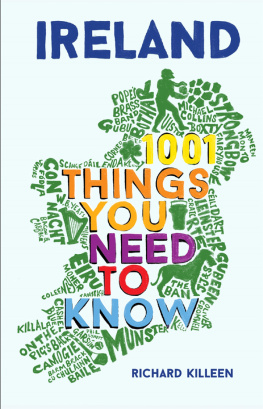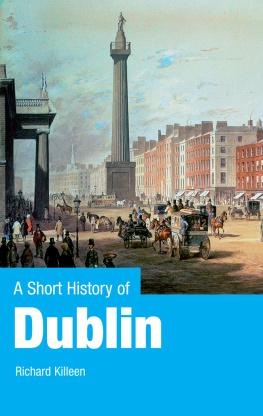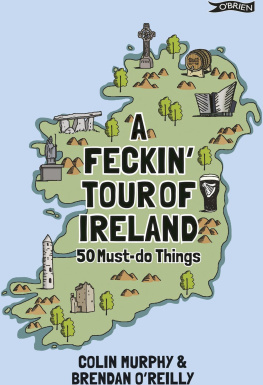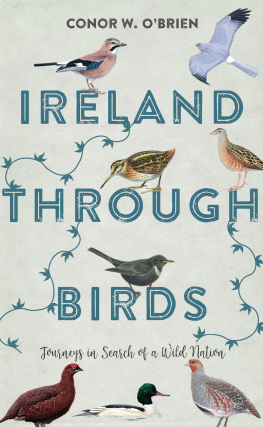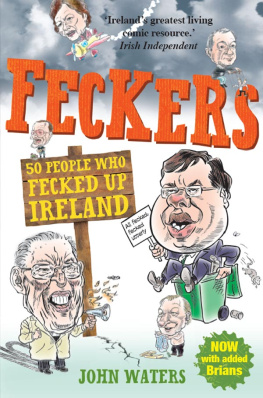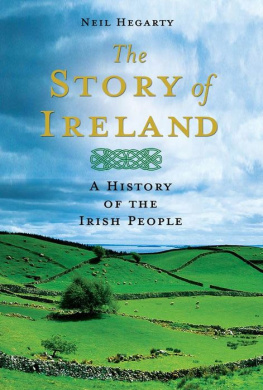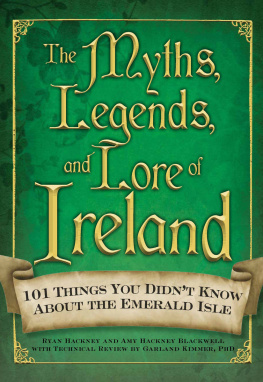Contents
Guide
IRELAND
ALSO BY THE SAME AUTHOR
A Brief History of Ireland
A Short History of Dublin
A Short History of the 1916 Rising
A Short History of the Irish Revolution
A Short History of Ireland
IRELAND
1,001 Things You Need to Know
RICHARD KILLEEN

First published in Great Britain in 2017 by Atlantic Books,
an imprint of Atlantic Books Ltd.
Copyright Richard Killeen, 2017
The moral right of Richard Killeen to be identified as the author of this work has been asserted by him in accordance with the Copyright, Designs and Patents Act of 1988.
All rights reserved. No part of this publication may be reproduced, stored in a retrieval system, or transmitted in any form or by any means, electronic, mechanical, photocopying, recording, or otherwise, without the prior permission of both the copyright owner and the above publisher of this book.
1 2 3 4 5 6 7 8 9
A CIP catalogue record for this book is available from the British Library.
Lines from Dublin by Louis MacNeice, from Selected Poems, Faber & Faber, 2007, reproduced by kind permission of David Higham Associates Ltd.
Map artwork by Jeff Edwards
Hardback ISBN: 978-1-78649-158-9
E-book ISBN: 978-1-78649-1-596
Paperback ISBN: 978-1-78649-1-602
Printed in Great Britain
Atlantic Books
An Imprint of Atlantic Books Ltd
Ormond House
2627 Boswell Street
London WC1N 3JZ
www.atlantic-books.co.uk
This book is for Richard, my son.
CONTENTS

This lovely land that always sent
Her writers and artists to banishment
And in a spirit of Irish fun
Betrayed her own leaders, one by one.
Twas Irish humour, wet and dry,
Flung quicklime into Parnells eye;
Tis Irish brains that save from doom
The leaky barge of the Bishop of Rome
For everyone knows the Pope cant belch
Without the consent of Billy Walsh.
James Joyce, from Gas From a Burner
I live in Ireland by choice, after experience of living many other places, and I am happy here. Our neighbours are friendly, our view is beautiful, my political friends are fine upstanding people, my political enemies fascinating in their own way. I dont mind the gossip any more than the rain. The censors are no longer eating writers in the street. We are not as bad as we are painted, especially by ourselves. In fact I love Ireland, as most Irish people do, with only an occasional fit of the shudders.
Conor Cruise OBrien, States of Ireland (1972)
What ish my nation? Ish a villain and
a bastard and a knave and a rascal.
The Irishman Macmorris in
Shakespeare, Henry V, act 3, scene 3
An incident in a heated by-election campaign in 1891.
ACKNOWLEDGEMENTS
I am grateful to the staffs of the National Library of Ireland, the National Archives of Ireland and Dublin City Libraries. The press offices of the Gaelic Athletic Association and An Garda Sochna were efficient and helpful. My friends Pat Cooke, Sandra DArcy, Tony Farmar, Jennifer Brady, Michael Fewer, Andrea Martin, Terence Brown and Eric Dempsey all made helpful suggestions, provided me with information that I might have struggled to come by otherwise and corrected my mistakes. I appreciate the help and advice of my agent Ivan Mulcahy. It has been a pleasure to work with Will Atkinson and James Nightingale at Atlantic Books. Beth Humphries has been an exemplary and scrupulous copy-editor, for whose professionalism I am extremely grateful.
1
LAND, LANDSCAPE AND SOCIETY
Ireland at a Glance
Population: The 2016 census in the Republic of Ireland (ROI) recorded 4,747,976 persons in its preliminary results. The best current estimate (2016) for Northern Ireland (NI) is 1,851,600, split 46 per cent Protestant (effectively Unionist, wishing to remain in the UK) to 44 per cent Catholic (Nationalist, wishing at least rhetorically to join ROI). For the first time, the percentage of respondents declaring no religious affiliation has crept into double figures, if only just at 10 per cent. This narrowing of the traditional gap between the two religious affiliations is not progressive: while those who declare themselves Protestant are no longer the majority, there is no indication of a Catholic majority in the foreseeable future. There is what appears to be demographic deadlock.
Area: 84,421 sq. km / 32,595 square miles. Thats a little smaller than the state of Maine but a bit bigger than that of West Virginia. Near enough, its about the same size as South Carolina. In European terms, that makes the island about the same size as the Nouvelle-Aquitaine, the south-western region of France between Bordeaux and the Spanish border. Its a bit bigger than Bavaria, about the same size as Austria and about two-thirds the size of England. Its the third-largest island in Europe after Great Britain and Iceland and well ahead of all the Mediterranean islands.
Highest point: Carrantuohill, in the Macgillycuddys Reeks in Co. Kerry, 1,038 metres/3,406 feet. Not exactly Alpine, but try climbing it in Irish weather. Actually, dont: its very dangerous in bad weather.
Lowest point: North Slob, Co. Wexford, a wildfowl reserve that was created in the nineteenth century at the estuary of the River Slaney in the south-east of the island.
Most northerly point: Ballyhillin, Malin Head, Co. Donegal
Most southerly point: Brow Head, Mizen Peninsula, Co. Cork
Most westerly point: Dunmore Head, Dunquin, Co. Kerry
Most easterly point: Burr Point, Ards Peninsula, Co. Down
Length of coastline: 3,171 km / 1,970 miles
Furthest point from the sea: Close to the village of Lecarrow, Co. Roscommon
Largest lake: Lough Neagh, which borders five of the six counties of Northern Ireland (Co. Fermanagh being the exception), 383 sq. km / 148 sq. miles); the largest freshwater lake in the British Isles
Longest river: the Shannon, 386 km / 240 miles. It rises at Shannon Pot, Co. Cavan and with its tributaries, drains much of the centre of the island as it flows south and then west to enter the Atlantic between Co. Clare and Co. Kerry
Highest and lowest recorded temperatures: 33.3C at Kilkenny, 26 June 1887; -19.1C at Markree Castle, Co. Sligo, 16 January 1881
Principal economic activities: agriculture, information technology, financial services, medical and pharmaceutical
Numbers in education: (ROI) primary, 544,696; secondary, 372,296; tertiary, 173,649. The aggregate figure of 1,090,641 represents about 23 per cent of the ROI population in the education system. In NI, there are 168,669 pupils in primary schools; 141,112 in secondary; and 56,445 in tertiary. This represents just under 20 per cent of NIs population, although it does not account for NI students who attend third-level institutions in either ROI or Great Britain.
Divisions, Provinces and Counties
The island is partitioned under the terms of the Government of Ireland Act 1920, which began the process whereby the Act of Union of 1801 was unravelled. In its place, devolved government was established. The six north-eastern counties of Ulster, which had a local Protestant majority, wished to remain part of the United Kingdom, unlike the remaining twenty-six counties on the island which were overwhelmingly Catholic and which now comprise the Republic of Ireland.

